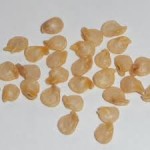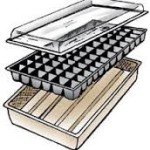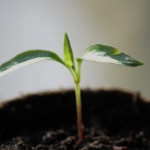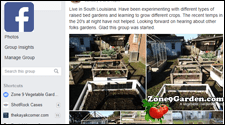![]()
This is an in-depth look at Sowing Peppers Seeds. This is part of the How to Grow Peppers Series.
Pepper seeds can be one of the slowest vegetable seeds to germinate. The average pepper seed takes about 5-10 days while the slowest can take over 2 weeks to germinate. With popper planning and care, pepper seeds can have a great germination rate and strong plants will be the result.
When to Sow Peppers Seeds
Pepper plants have very low tolerance to cold temperatures, and grow best in warm weather. When sowing peppers seeds indoors, the best time to sow them is about 4-7 weeks before the last frost date. If sowing outdoors (not recommended) pepper seeds should be sown when soil temperatures reach an average of 70-75 degrees. If sown outdoors the germination rate will be much lower and the amount of time the plant has to produce peppers will be much shorter.
Select a Location
When selecting a location indoors to sow pepper seeds try to find a location that will receive ample amounts of light and that stays relatively warm all day. Pepper seeds germinate best when they are kept between 75-80 degrees, and once they germinate a good light source will be needed.
Pods, Pots of Flats?
There are almost countless options for the vessel that seeds can be sown in. The three most popular are Peat Pods, small pots (made out of natural materials such as peat) or a flat.
- Peat Pods – Peat Pots are small pods of peat moss that are made specifically for seed germination. They are usually small and do a VERY good job of retaining moisture and a good pH for germination. The down side to peat pods is they lack nutrients for the plant, so seedlings will have to be transplanted to a pot sooner than other methods.
- Pots – There are many options for seed sowing pots, but the most popular are small pots made out of natural materials such as peat or cow manure. The natural material pots are relatively cost effective and make transplanting the seedling quicker and easier than plastic or ceramic pots.
- Flats – Flats are simply trays that soil is added to. Some have individual cups for single seedling, some do not. The advantage to flats
When sowing seeds in a flat or pots, use a high quality seed starting mix (available at most garden stores). These mixes are high in peat which helps maintain moisture and retain warmth.
Sowing the seeds
Pepper seeds are quite small and have a relatively low germination rate.
When sowing the peppers seeds they should be sown at about 1/4 of an inch and no deeper with 2-3 seeds per hole. If they are sown too deep the new plant may have a hard time reaching the surface and when it does, its growth will be stunted. If more than one seed germinates, cull the smaller of the seedlings.
Keep Growth Moist and Medium Warm
Peppers seeds require warm, moist soil to germinate. The soil should be kept between 75-80 degrees and be as moist as a damp sponge for best results. If the room the seeds are sown in is cool, there are heating pads made to keep seed starting soil at a consistent warm temperature. These heating mats are available at some garden shops and can be found online quite easily.
Post Germination Care
As soon as the first seeds have germinated it is important to ensure that the seedlings are getting plenty of light and water. 8-10 hours of direct light from a southern facing window or 10-12 hours of artificial light that is made for growing seedlings works well. The initial growth phase of pepper seedlings will require only light and water. Once the seedling has 4-6 true leaves it is time to transplant to a container.





